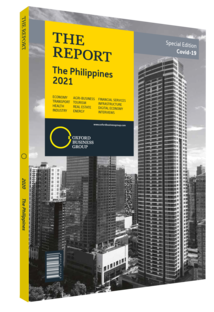Supply chain disruptions in 2020 drive Filipino farmers to adapt
Although agricultural activities were permitted during the lockdown period in the Philippines, some farmers nevertheless saw their activities limited by various provincial restrictions. In Quezon province, for example, stricter measures were implemented in April 2020 that permitted residents in some areas to leave their homes only once per week – placing the harvest at risk of spoilage during the dry season.
Given the disruptions to global supply chains affecting the importation of food, agriculture – which employs around 23% of the workforce – has grown in importance during the pandemic. The sector had already been identified under the Philippine Development Plan 2017-22 as key to reducing the country’s reliance on imports and boosting self-sufficiency.
To aid food security in the areas most affected by restrictions, in mid-April William Dar, the secretary of agriculture, announced the rollout of a new Plant, Plant, Plant programme. The P31bn ($616.6m) initiative will enhance inputs, provide seeds and boost production in the main island groups of Luzon, Visayas and the Bangsamoro Autonomous Region of Muslim Mindanao. Of this, P8.5bn ($169.1m) was allocated to the Rice Resiliency Project, which seeks to increase domestic rice production from 87% of consumption to 93%.
Farm to Market
In addition to production hurdles, many farmers who harvested their crops faced challenges selling their produce due to movement restrictions. In an effort to strengthen linkages between food producers and the market, the Department of Agriculture created four food supply chain clusters on Luzon, the Visayas and Mindanao. Through collaboration with government agencies and local government units (LGUs), these clusters were tasked with identifying prime agricultural products and potential markets to develop localised supply chains.
For example, farmers in Eastern Visayas were connected with public organisations that include the region’s medical centre, which is the designated referral hospital for Covid-19 patients; LGUs themselves, responsible for disbursing food support packages; and the body responsible for the oversight of jails.
Peer-to-Peer Financing
Before the government worked to maintain production and linkages during the pandemic, a series of tech solutions were created in recent years to improve farmers’ access to financing. In a country where 75% of the population is unbanked, it can be particularly challenging to finance rural businesses with limited access to banking infrastructure. As a result of the low rate of financial inclusion, the market is characterised by a tradition of seeking financial support from family rather than from official institutions. These informal channels lack the bureaucratic hurdles and interest rates of traditional lenders, and are accessible to those with limited financial literacy.
Peer-to-peer lending via crowdfunding start-ups has emerged as an alternative form of financing for farmers or companies looking to enhance productivity through investment in improved farmer education, enhanced inputs and increased mechanisation. One such service is the Cropital crowdfunding platform, through which investors choose a farm for investment and then receive a fixed-rate return contingent upon the harvest’s success. In addition to providing credit, the enterprise also links farmers with insurance providers and agricultural training resources.
Meanwhile, local start-up FarmOn offers an alternative lending model whereby investors select a crop for investment. The financing is then used by numerous farmers to purchase the necessary inputs and technologies from FarmOn, which is the start-up’s source of revenue. After the farmer cultivates and sells the crop, they split the profits evenly with the investor.
Looking ahead, it will be important for government and private entities to continue building localised supply chains to guard against future disruptions while expanding farmers’ access to credit through innovative and accessible technologies to facilitate modernisation.
You have reached the limit of premium articles you can view for free.
Choose from the options below to purchase print or digital editions of our Reports. You can also purchase a website subscription giving you unlimited access to all of our Reports online for 12 months.
If you have already purchased this Report or have a website subscription, please login to continue.

